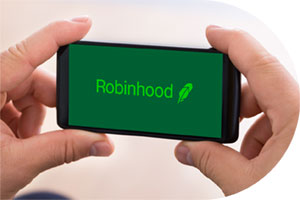
Investing with a Robinhood Account? Remember These 3 Tips
Perhaps no personal finance service generates more intrigue than Robinhood, the popular mobile application and online brokerage platform offering commission-free trading of stocks, exchange-traded funds (ETFs), options and even cryptocurrencies.
Robinhood first generated buzz in the financial world when it launched in early 2015. At the time, investors looking to purchase stocks and ETFs were accustomed to paying $5 to $8 per trade.* Robinhood slashed this price to $0, attracting new investors and converts from competitors like TD Ameritrade, Charles Schwab and E-Trade. This no-cost model quickly gained popularity, and by 2019 many of Robinhood’s competitors had shifted to the “new normal” of zero-fee trading.
However, the Robinhood name has grown controversial. On the back of renewed interest in cryptocurrencies and the rise of “meme” stocks popularized on social media, like Gamestop, critics have accused Robinhood of turning investing into a game-like process and encouraging inexperienced investors to take unnecessary financial risks.
Proponents of Robinhood and other commission-free trading solutions argue that the model has democratized financial markets by providing investment access to investors who otherwise would not have the knowledge or ability to trade.
Wespath has no partnership with Robinhood and cannot offer specific investment advice for the platform. Nevertheless, we are here to support your financial well-being wherever possible. Should you choose to use a platform like Robinhood, consider the following tips.
Trading on Robinhood is not necessarily retirement saving – Robinhood is best utilized as a way to dabble in stock, ETF and options trading outside your primary long-term savings vehicle. Currently, the platform only offers a taxable brokerage account. There are several account types available from other providers with more favorable tax benefits for retirement savings. Furthermore, a strong retirement portfolio should include diversification through many asset classes, including some—like bonds and other fixed income investments—that Robinhood does not offer.
Be cautious about your spending – One of the most common reasons people are unable to save for retirement is a spending habit. While putting your money in a Robinhood account may feel like saving, it can quickly turn into another expense if the values of your investments decline.
Robinhood also does not offer a controlled distribution solution to help you manage how you spend your savings. Your primary long-term savings vehicle may have an option for this. For example, Wespath offers a retirement income distribution solution for retired participants who want to optimize the distribution of their hard-earned savings over their lifetimes. You can read more about LifeStage Retirement Income at www.wespath.org/r/lsri.
Remember to talk to a professional – If you have questions about saving, or if you would like to discuss whether your finances are prepared for trading on a Robinhood, remember that you can receive comprehensive financial guidance from EY Financial Planning. This service is offered to Wespath participants at no additional cost! 1
1 Costs for EY Financial Planning Services are included in Wespath's operating expenses that are paid for by the funds. EY Financial Planning Services are available to active participants and surviving spouses with account balances, and to retired and terminated participants with account balances of at least $10,000.

